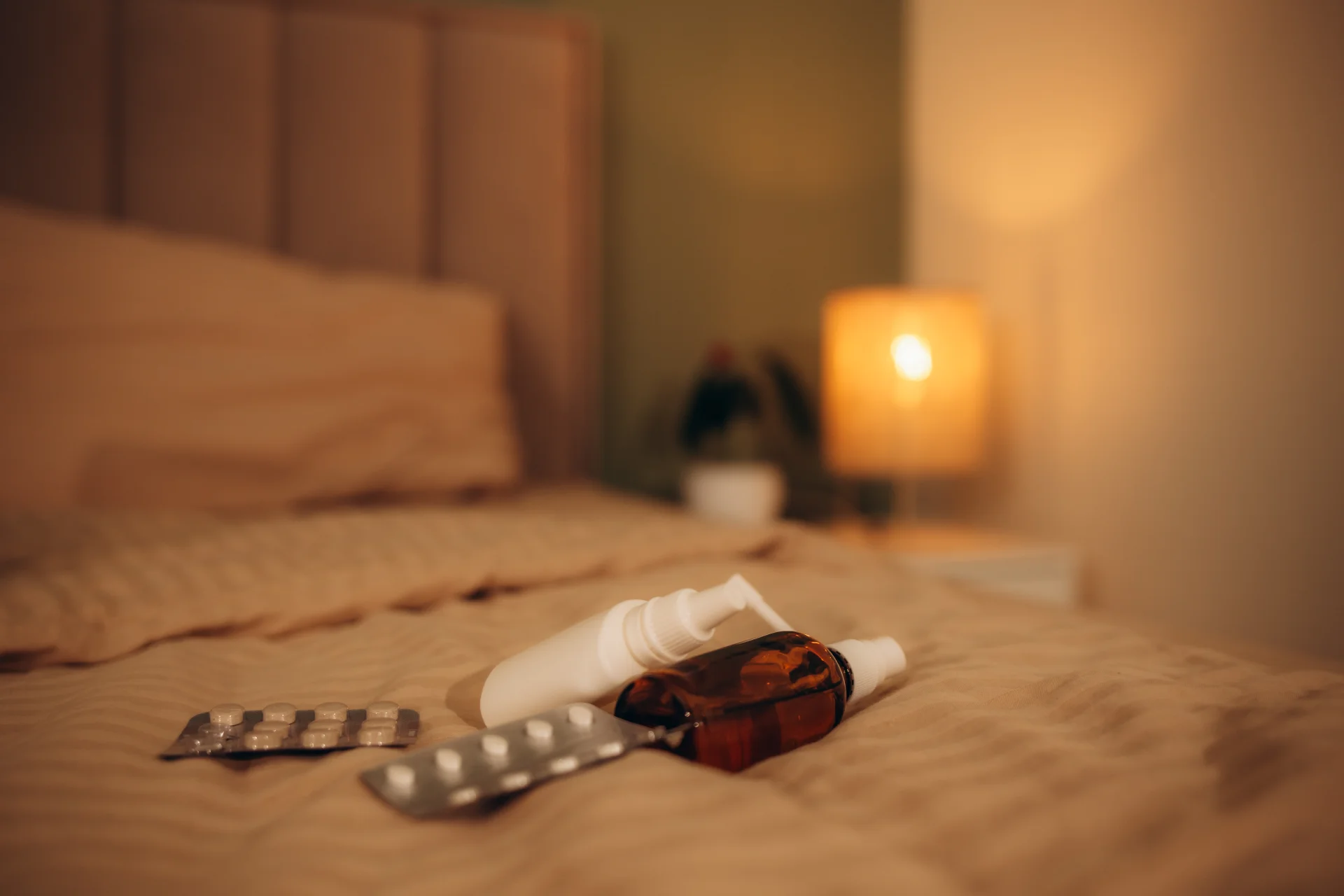Halcion Addiction Treatment in Long Island
A Long Island focused guide to Halcion that explains how short acting triazolam can lead to tolerance, dependence, and rebound insomnia, the warning signs and overdose risks of misuse, safer taper and detox options, proven therapies like CBT I and CBT, and how we connect you with nearby programs that accept your insurance.
Covered by most insurance plans
Available to help you 24/7
Table of Contents
Halcion, the brand name for triazolam, is a short acting benzodiazepine prescribed for short term insomnia. It enhances GABA activity for rapid sedation, but effects wear off quickly. This fast on and fast off profile can lead to rebound anxiety between doses and higher misuse risk when taken longer or at higher doses than prescribed. Long Island Addiction Resources helps you compare trusted programs near you that fit your needs and insurance. We are a connector and guide, not a treatment facility.

How Dependence and Addiction Develop
With repeated use, the brain adapts to triazolam’s GABAergic effects. Tolerance means needing more for the same sleep benefit. Dependence means withdrawal symptoms appear when cutting back. For some, this escalates to addiction, which is compulsive use despite harm. Risks rise with prolonged use, dose escalation, mixing with alcohol or opioids, polysubstance use, and untreated anxiety or depression.
Warning Signs to Watch
- Physical Heavy drowsiness, slowed reflexes, slurred speech, poor coordination, morning hangover, shallow breathing.
- Psychological Memory gaps such as anterograde amnesia, mood swings, rising anxiety between doses, irritability, depressed mood.
- Behavioral Taking extra pills, doctor shopping, secrecy around use, neglecting responsibilities, mixing with alcohol or other sedatives.
Health Risks of Misuse
- Overdose Higher risk with alcohol or opioids. Can cause respiratory depression, loss of consciousness, and death.
- Accidents and cognitive effects Falls, impaired judgment, attention and memory problems.
- Rebound insomnia Sleep can worsen when doses are missed or reduced too quickly.
Withdrawal and Detox
Stopping triazolam abruptly can trigger benzodiazepine withdrawal. Symptoms can include severe insomnia, anxiety or panic, tremor, nausea, perceptual disturbances, and in severe cases seizures or delirium. A gradual, individualized taper under medical supervision is the safest route. Monitoring typically includes vitals, mental status, sleep, and seizure threshold.

Common Detox Approaches
- Direct taper Small, scheduled dose reductions of triazolam with pacing adjusted to symptoms.
- Cross taper when appropriate Switching to a longer acting benzodiazepine to smooth interdose withdrawal, then tapering.
- Supportive care Sleep hygiene, light exercise, hydration, and non addictive medicines for gastrointestinal upset, headaches, or autonomic symptoms.
Levels of Care on Long Island
- Inpatient or residential Twenty four hour medical and therapeutic support for severe dependence, polysubstance use, or safety risks such as seizure history.
- Partial Hospitalization and Intensive Outpatient Structured daytime care with medication management, skills groups, and monitoring.
- Outpatient Prescriber led taper planning, psychotherapy, and relapse prevention while you live at home.
Therapies That Improve Outcomes
- CBT I for insomnia Stimulus control, sleep restriction, circadian and cognitive strategies to restore natural sleep without sedatives.
- Cognitive Behavioral Therapy Identifies triggers, reduces catastrophic thinking, and builds coping and behavioral activation.
- Dialectical Behavior Therapy skills Distress tolerance and emotion regulation during taper waves.
- Motivational interviewing Strengthens commitment to change and adherence to the plan.
- Group and family work Accountability, communication skills, and boundary setting to reduce enabling.
Holistic and Complementary Supports
Mindfulness, paced breathing, gentle yoga, and acupuncture can lower autonomic arousal and support sleep regulation while the nervous system recalibrates.

Relapse Prevention and Aftercare
- Written plan with early warning signs such as sleep collapse, dose timing rigidity, and craving, plus if then coping steps and support contacts.
- Regular follow ups for 6 to 12 months after taper. Use slow final dose reductions to avoid setbacks.
- Address co occurring conditions with non benzo strategies such as CBT I, CBT, and appropriate non sedative medications when indicated.
Practical Safety Tips
- Use a single prescriber and one pharmacy. Disclose all medications and supplements including alcohol use.
- Avoid alcohol, opioids, and other sedatives. Never self adjust your dose.
- Track sleep and anxiety daily to guide taper speed. Keep a consistent wake time and increase morning light exposure.
- Secure storage, no sharing, and consider naloxone in homes where opioids are present.
Find Help on Long Island
Recovery is challenging and achievable. The right match between clinical needs, level of care, and personal preferences makes a real difference. Long Island Addiction Resources connects you with vetted programs across levels of care including medical detox, residential treatment, partial hospitalization, intensive outpatient, standard outpatient, and recovery housing.
Start today
If you or a loved one are ready to end your alcohol and drug use, there are many recovery options available near you in Long Island
Are you ready to take back control over your life?
Making the decision to seek help is one of the hardest and bravest steps you can take. We know that the recovery process is not always easy—there may be challenges along the way—but every step forward brings you closer to a life free from the weight of addiction.
Find treatment options covered by insurance















Let today be
your Day 1
We'll get on a call, assess your health history, and verify your insurance. Today is Day 1. We can't wait to celebrate Day 1000 with you!
Fill out this simple form and we’ll call you right back.
Frequently Asked Questions
We'll get on a call, assess your health history, and verify your insurance. Today is Day 1. We can't wait to celebrate Day 1000 with you!
How long does a Halcion taper take?
There’s no universal schedule many tapers run weeks to several months. Longer or high-dose use often requires a slower pace, especially at the final dose steps.
Can I switch to another sleep med while tapering?
Sometimes a clinician will use non-sedative sleep strategies (CBT-I) and, when needed, short-term non-benzodiazepine supports. Any medication changes should be prescriber-directed.
Is inpatient detox necessary for Halcion?
Not always. Severity of dependence, seizure risk, polysubstance use, medical/psychiatric comorbidities, and home supports determine whether inpatient, PHP/IOP, or outpatient care is best.
Why is my insomnia worse when I cut down?
That’s rebound insomnia. A gradual taper plus CBT-I (sleep restriction, stimulus control, circadian cues) helps stabilize sleep without returning to higher doses.
Is it safe to use alcohol to “take the edge off” during taper?
No. Alcohol and triazolam both depress respiration and dramatically increase overdose and relapse risk. Use clinician-approved coping tools instead.
